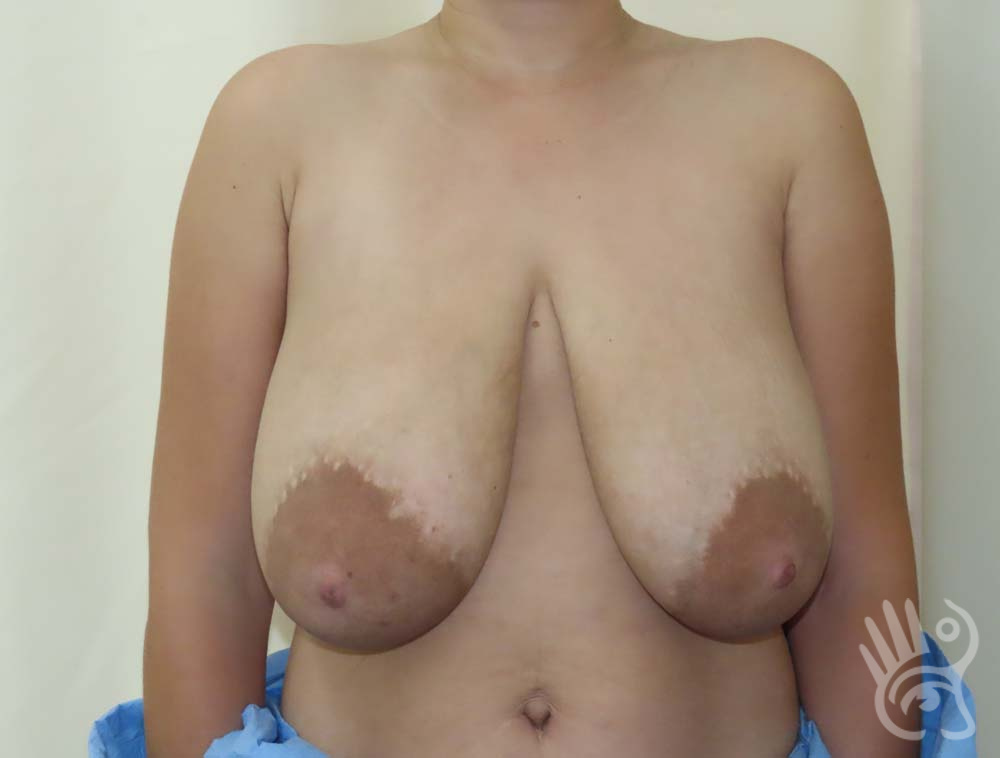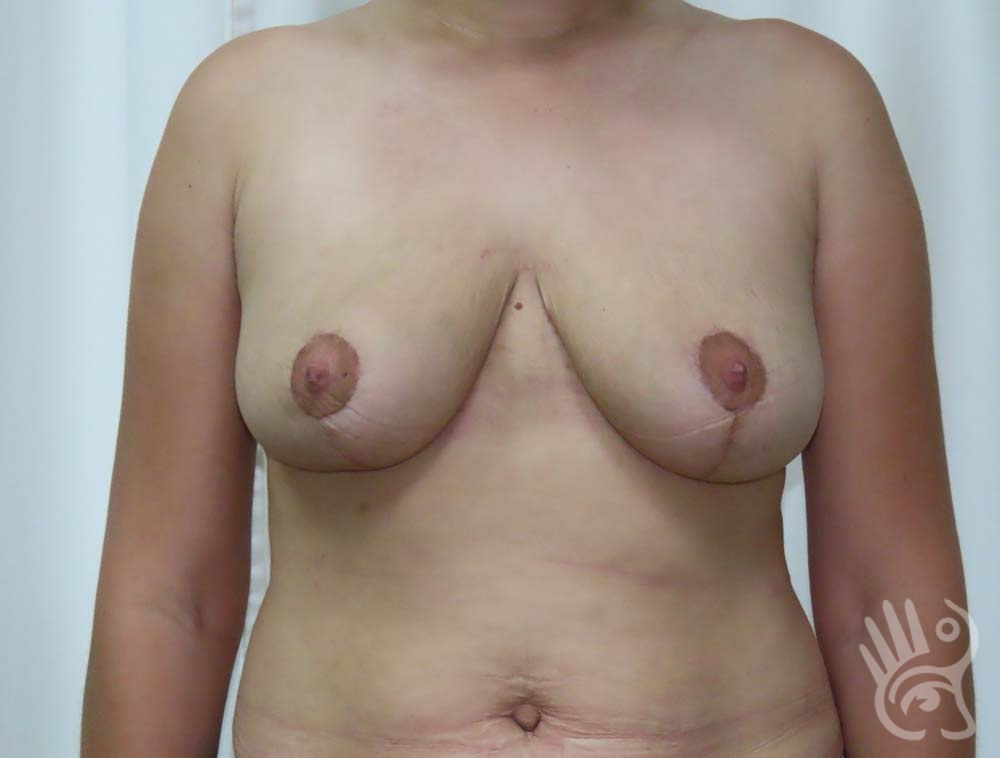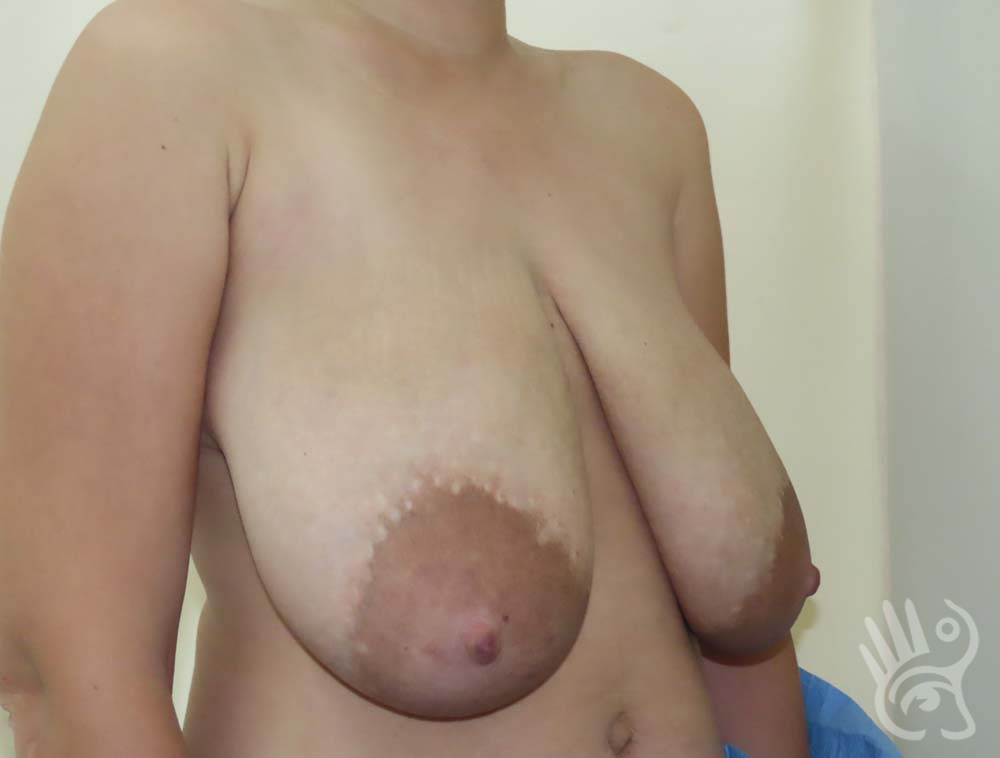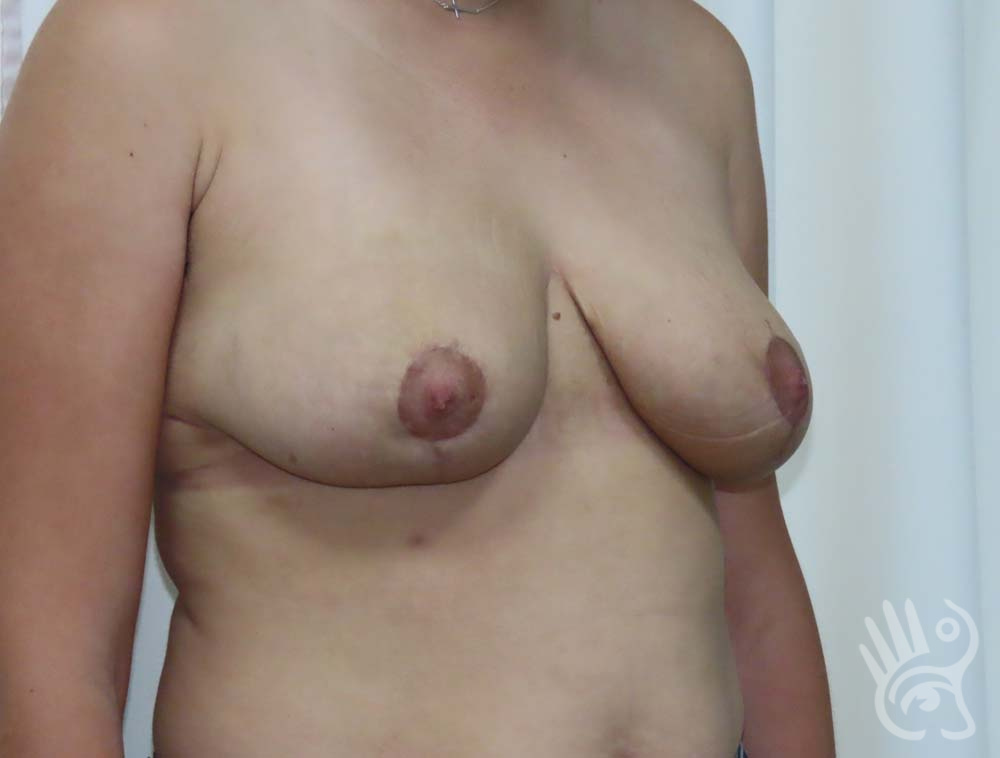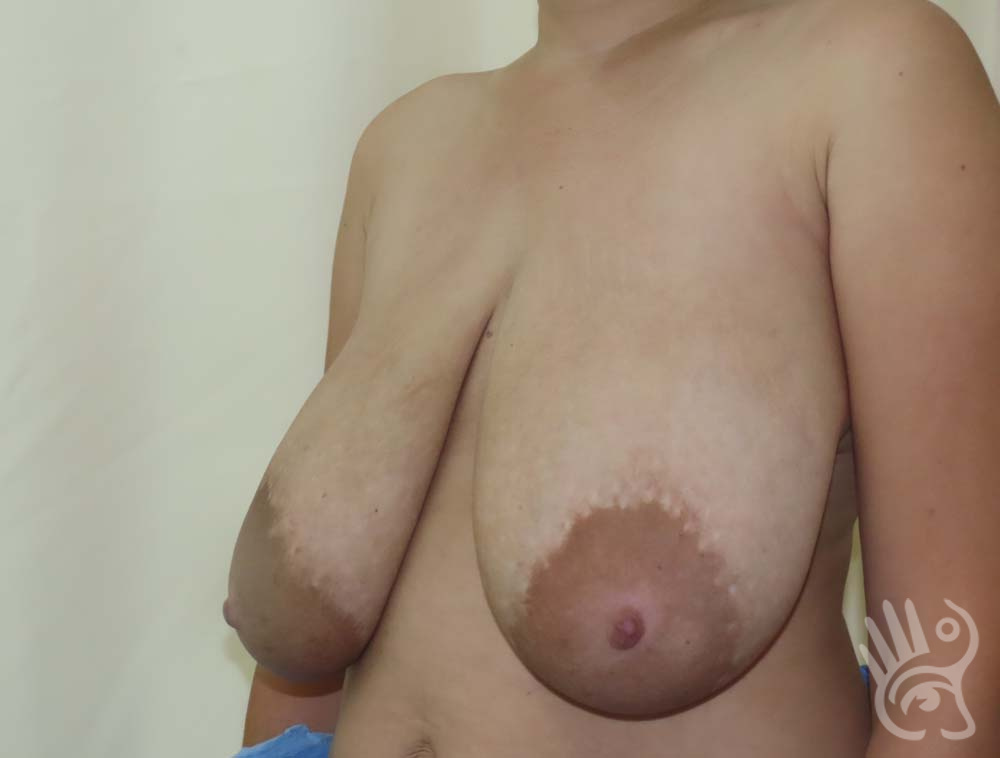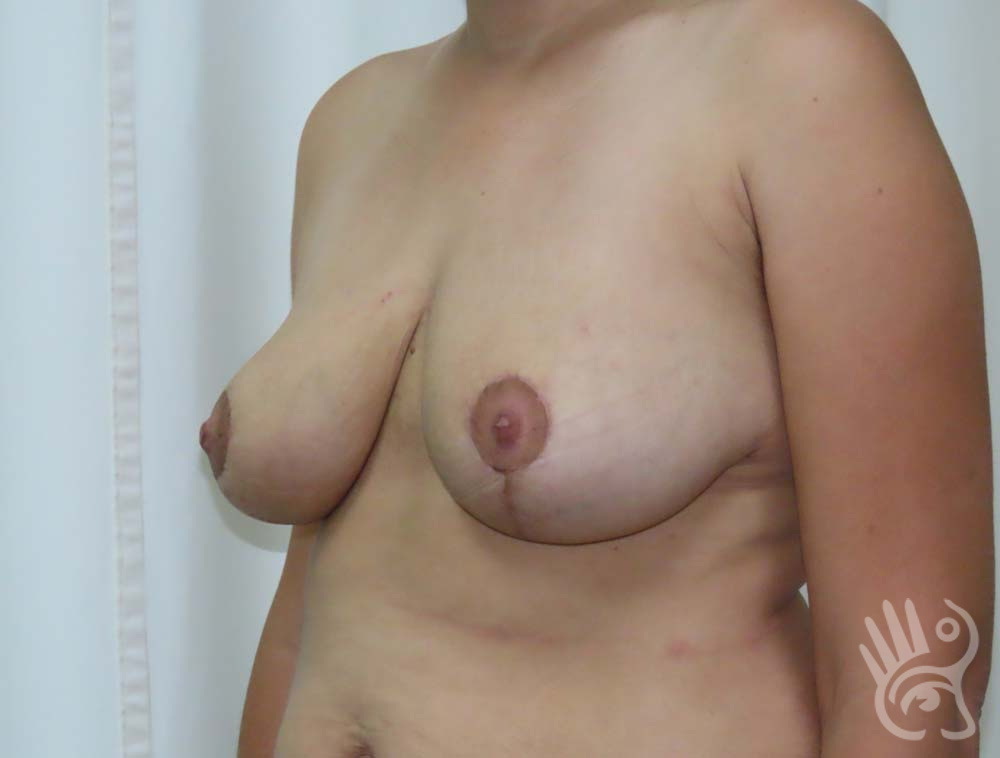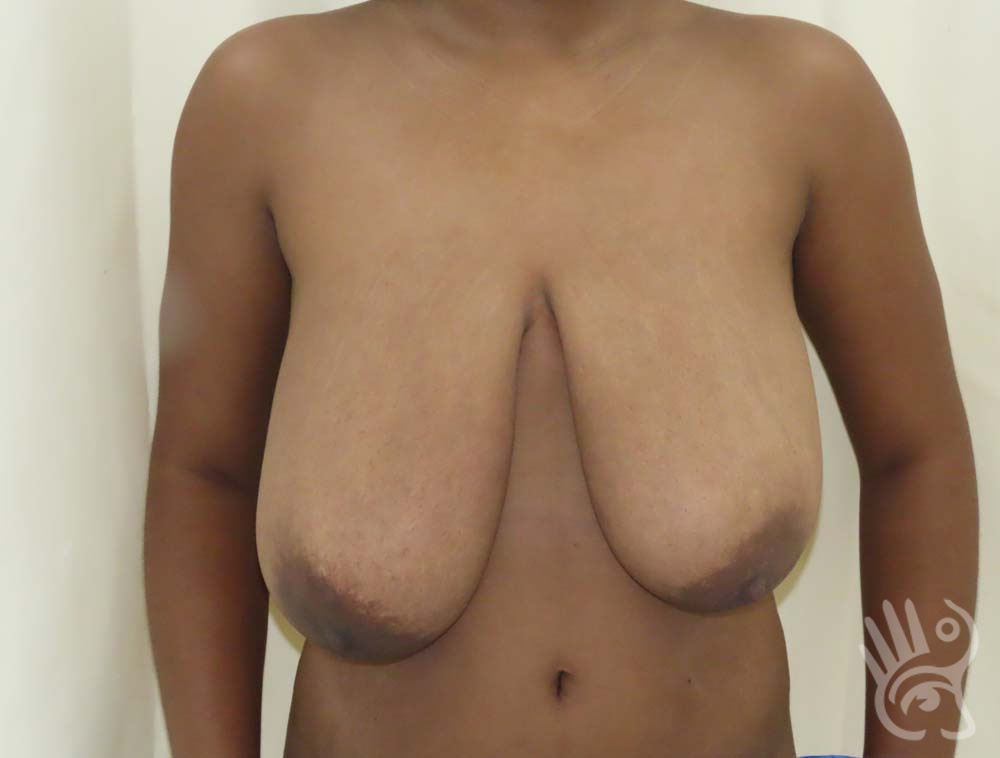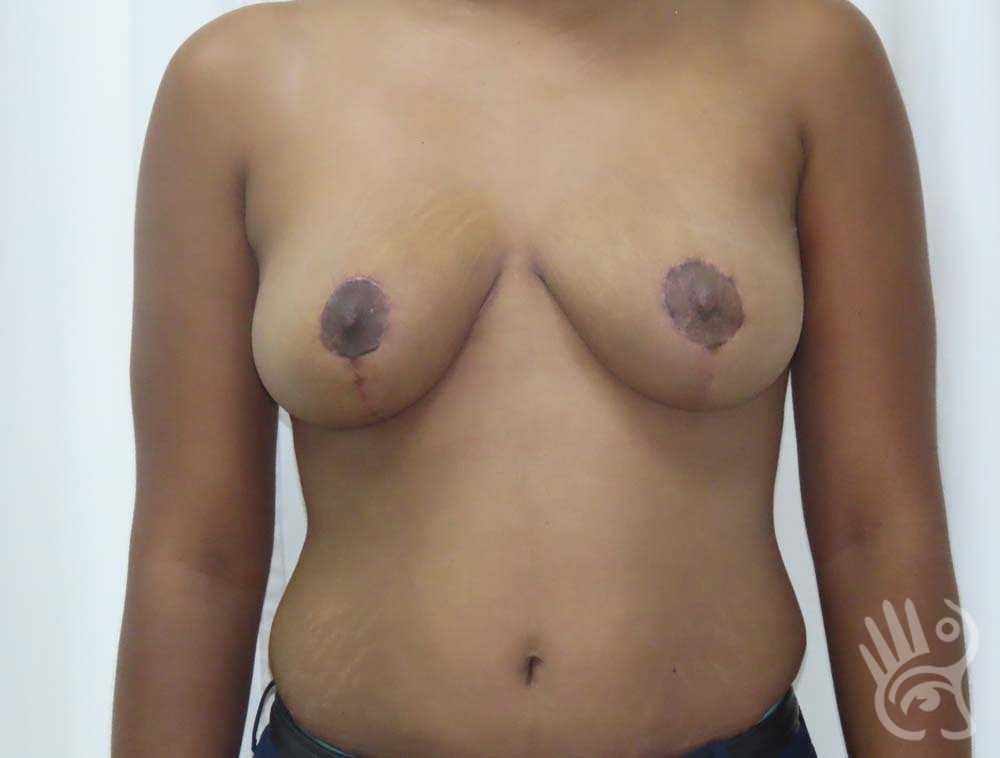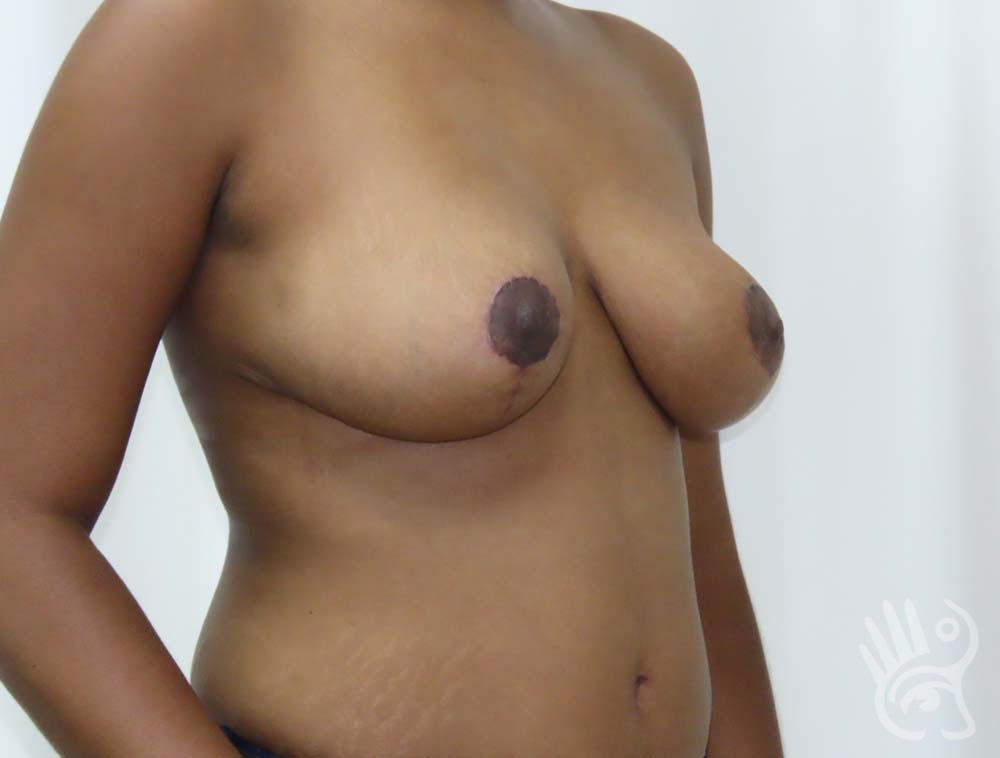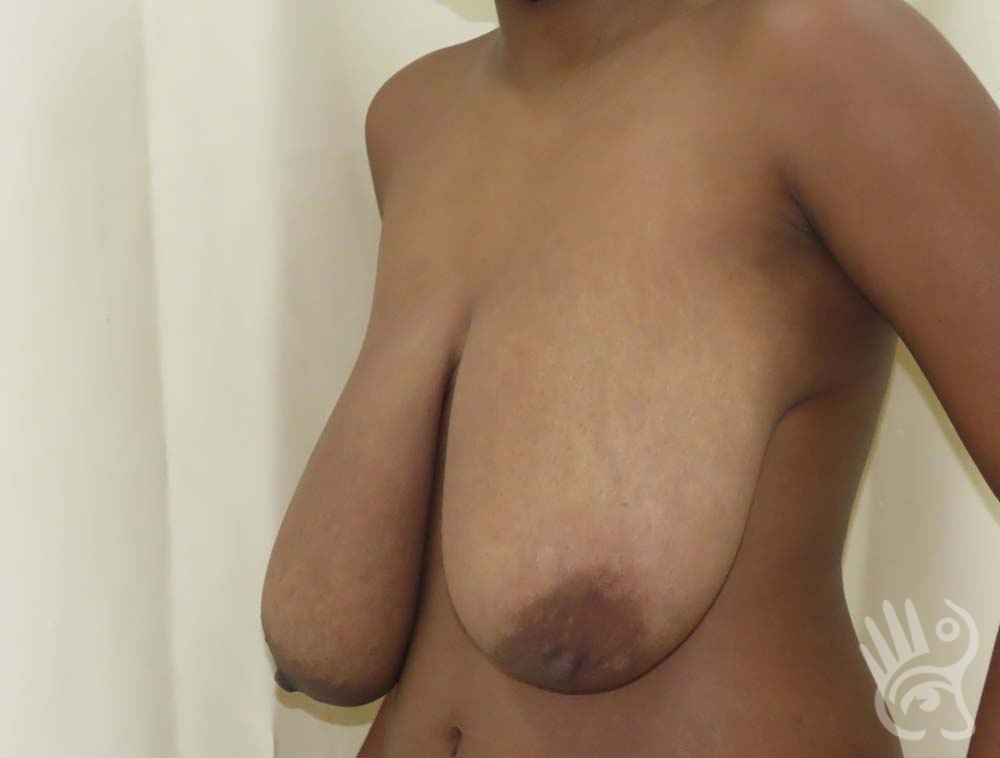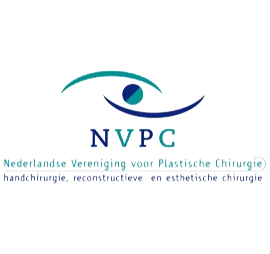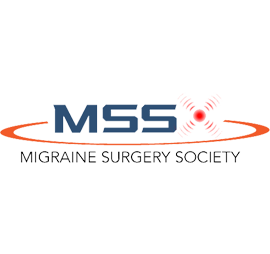By nature, breasts can become ptotic during puberty and with aging all breasts will to some extend succumb to the force of gravity. Pregnancy and weight loss will speed up this proces. After removing breast implants the breasts may become deflated and ptotic. When breasts are excessively ptotic they may cause discomfort as the bra has to lift the entire breast which can result in back, shoulder and neck pain. Bra straps can cut and rub into the skin of the shoulders and sweating underneath the breast can cause irritations and fungus infections. Ptotic breasts can be experienced to be repulsive or shameful. In most women an asymmetry can be observed whereby one breast is larger, hanging lower or has a slightly different shape. When the asymmetry is significant finding the right size bra may become difficult. A breast lift elevates the volume of the breast and moves the nipple-areola complex towards the center of the breast. If a larger breast volume is desired, a breast augmentation using a prosthesis can be performed at the same time as the breast lift.
